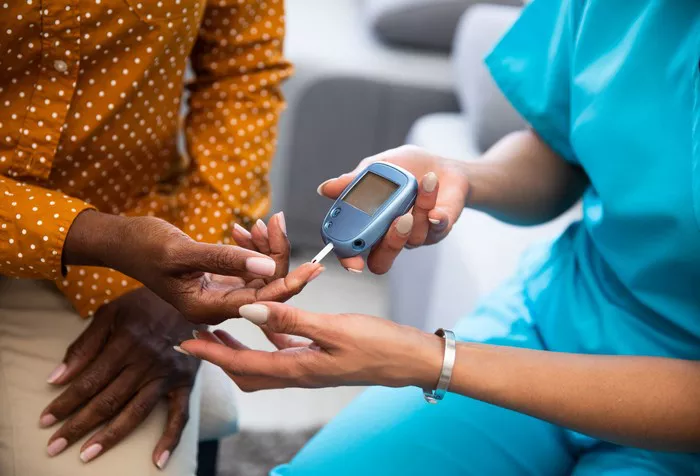Diabetes is a chronic metabolic disorder characterized by elevated blood sugar levels due to either insufficient insulin production or ineffective utilization of insulin by the body. It is essential to differentiate between the various types of diabetes as each requires distinct management strategies and treatment approaches. In this comprehensive article, we explore the different types of diabetes, their unique characteristics, diagnostic criteria, and how individuals can identify the type of diabetes they have.
Understanding the Different Types of Diabetes:
1. Type 1 Diabetes (T1D): Type 1 diabetes, formerly known as insulin-dependent diabetes or juvenile-onset diabetes, is an autoimmune condition where the body’s immune system mistakenly attacks and destroys insulin-producing beta cells in the pancreas. This results in little to no insulin production, leading to elevated blood sugar levels. T1D typically presents in childhood or adolescence but can occur at any age.
2. Type 2 Diabetes (T2D): Type 2 diabetes, previously referred to as non-insulin-dependent diabetes or adult-onset diabetes, is characterized by insulin resistance, where the body’s cells fail to respond effectively to insulin. Initially, the pancreas compensates by producing more insulin, but over time, insulin production may decrease. T2D is often associated with lifestyle factors such as obesity, physical inactivity, and poor dietary habits.
3. Gestational Diabetes Mellitus (GDM): Gestational diabetes develops during pregnancy and is characterized by elevated blood sugar levels that typically resolve after childbirth. It occurs when the body cannot produce enough insulin to meet the increased demands of pregnancy. GDM increases the risk of complications for both the mother and the baby and may indicate an increased risk of developing T2D later in life.
4. Other Specific Types of Diabetes: This category includes various forms of diabetes caused by specific genetic mutations, pancreatic diseases, medication-induced diabetes, and endocrine disorders. Examples include maturity-onset diabetes of the young (MODY), cystic fibrosis-related diabetes, and steroid-induced diabetes.
How to Determine the Type of Diabetes:
Diagnosing the type of diabetes involves a combination of clinical evaluation, laboratory tests, medical history, and sometimes genetic testing. Here’s how individuals can identify the type of diabetes they have:
1. Medical History and Symptoms: Healthcare providers will inquire about the individual’s medical history, including family history of diabetes, age of onset, symptoms experienced, and any associated risk factors such as obesity or gestational diabetes during pregnancy.
2. Physical Examination: A physical examination may reveal signs associated with diabetes, such as weight loss, increased thirst and urination, blurred vision, fatigue, and slow wound healing.
3. Blood Tests: Blood tests are essential for diagnosing and distinguishing between different types of diabetes. These tests include:
- Fasting Plasma Glucose (FPG) Test: Measures blood sugar levels after fasting for at least eight hours. A fasting glucose level of 126 mg/dL (7.0 mmol/L) or higher on two separate occasions indicates diabetes.
- Oral Glucose Tolerance Test (OGTT): Involves consuming a glucose solution, followed by blood sugar measurements two hours later. A glucose level of 200 mg/dL (11.1 mmol/L) or higher indicates diabetes.
- Hemoglobin A1c (HbA1c) Test: Measures average blood sugar levels over the past two to three months. An HbA1c level of 6.5% or higher is diagnostic of diabetes.
4. Autoantibody Testing: In cases of suspected Type 1 diabetes, healthcare providers may test for the presence of autoantibodies against pancreatic beta cells, such as glutamic acid decarboxylase (GAD) antibodies or insulinoma-associated protein 2 (IA-2) antibodies.
5. C-peptide Levels: C-peptide is a protein produced along with insulin. Low levels of C-peptide may indicate decreased insulin production, suggesting Type 1 diabetes, while high levels may suggest insulin resistance seen in Type 2 diabetes.
6. Genetic Testing: Genetic testing may be considered in specific cases, such as suspected MODY or other monogenic forms of diabetes.
Differentiating Between Type 1 and Type 2 Diabetes:
While the diagnostic criteria outlined above can help differentiate between Type 1 and Type 2 diabetes, there are key distinguishing factors between the two:
1. Age of Onset: Type 1 diabetes often presents in childhood or adolescence, whereas Type 2 diabetes typically occurs in adults, although its prevalence is increasing among younger populations due to rising obesity rates.
2. Autoimmune Markers: Type 1 diabetes is associated with the presence of autoantibodies against pancreatic beta cells, whereas Type 2 diabetes is characterized by insulin resistance and relative insulin deficiency.
3. Insulin Dependency: Individuals with Type 1 diabetes require exogenous insulin for survival due to a lack of endogenous insulin production, whereas those with Type 2 diabetes may initially manage their condition with lifestyle modifications, oral medications, or non-insulin injectables before progressing to insulin therapy if needed.
Conclusion:
In conclusion, identifying the type of diabetes involves a thorough evaluation of clinical presentation, laboratory test results, medical history, and sometimes genetic testing. While Type 1 diabetes is characterized by autoimmune destruction of pancreatic beta cells and insulin deficiency, Type 2 diabetes is primarily due to insulin resistance and relative insulin deficiency. Gestational diabetes and other specific types of diabetes have their own diagnostic criteria and management strategies. By understanding the differences between the various types of diabetes and seeking appropriate medical evaluation, individuals can receive timely diagnosis and personalized treatment for optimal diabetes management and long-term health outcomes.

























